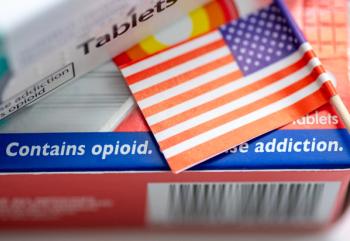
- Drug Topics January 2021
- Volume 165
- Issue 1
Pharmacist Tackles Opioid Crisis With Innovative Projects
Elizabeth Dragatsi, RPh, BCPS, worked on 2 projects integrating community pharmacists into contingency management and opioid education.
Two pharmacists recently completed a series of unique projects in collaboration with the Community Pharmacy Foundation (CPF) to address the opioid crisis in their communities.
Throughout her experience in hospital pharmacy and clinical practice, Dragatsi became acutely aware of the unaddressed needs relating to adverse drug effects (ADEs) or interactions that undermined treatment goals.
Knowing she wanted to help patients in these situations, Dragatsi went on to earn her BCPS and formed her own company,
As a consultant pharmacist, Dragatsi studied the most complex patient medication lists from all over Maine. She soon identified almost $50,000 worth of preventable ADEs in 11 patients. This discovery led Dragatsi to form new relationships with practice sites and federally funded health care centers.
“I saw an opportunity to perform innovative pharmacy practice...but needed to figure out how to do this in a financially viable way,” she said.
Dragatsi submitted a grant proposal to CPF on integrating pharmacists into the medication review process and addressing ADEs. The grant was approved.
Within just 1 week of beginning the project, Dragatsi became keenly aware of the opioid crisis’s effects on her community. New legislation forced patients to taper off opioids, but the patients needed help. Dragatsi incorporated this into her project.
“I accumulated a treasure trove of new clinical information centering around effective OTC medication use in patients as part of self-care when tapering off opioids,” Dragatsi said.
In the polypharmacy patients, Dragatsi was able to identify $280,890 worth of preventable adverse effects and reduce some of the concurrent medication use. In patients with chronic pain, there was a 43.3% reduction in morphine milligram equivalents due to patient self-care education.
Dragatsi applied (and was approved) for a second CPF grant to further tackle the opioid problem. “I knew that there was a need for pharmacists to be educated and integrated into the medication-assisted therapy process meaningfully, and to know how to reduce stigma using new terminology,” she said.
Dragatsi had many goals as part of this project, including:
- creating a 17-month calendar of self-care clinical pearls, such as the beneficial impact of smoking cessation and OTC self-care tips on opioid tapering;
- surveying pharmacists for baseline knowledge about 17 clinical pearls;
- producing patient leaflets (with project support by
Frank McGrady, PharmD, BCPS andKris Ravin, PharmD ); and - educating pharmacists based on survey data, using written and live continuing medical education courses.
However, early in the project course, Dragatsi faced a major hurdle.
“I was diagnosed with a highly invasive and rare form of breast cancer,” Dragatsi shared. “I was not expected to live very long after project completion.” Her colleagues,
In terms of results, Dragatsi observed that all of the material provided to patients “really contributed to patient resilience. This is beneficial for countering hypertension, high cholesterol, and bacterial and viral infections,” she said. She also emphasized that as pharmacists, we tend to focus on prescription drugs, often overlooking the benefits of OTC medications. “In the OTC realm, there is a lot of patient benefit to be realized,” she said.
In this project, Dragatsi was able to personally help 22 patients taper down and off of opioids by working closely with providers and using OTC products. Overall, Dragatsi & Co. assisted over 100 patients in tapering opioids.
Today, Dragatsi is “enjoying full health, strength, and cognition with no signs of the end of my remission.” She credits working on the CPF projects as part of her cancer recovery.
So what can pharmacists do in practice to help patients as Dragatsi did? Dragatsi recommends pharmacists think about how to take a few minutes to achieve maximum effect. “Work smart, not hard. Teach patients how to invest in personal resilience, and make their day better as well as your own for having done so,” she said.
The CPF, led by Anne Marie (Sesti) Kondic, PharmD, executive director, is a non-profit organization dedicated to advancing community pharmacy practice and patient care delivery through grant funding and resource sharing.
Articles in this issue
almost 5 years ago
A Whirlwind of Change Paves Way for Pharmacy’s Futurealmost 5 years ago
OTC Basics for Diabetesalmost 5 years ago
Pharmacists Must Unify to Overcome Challenges in Professionalmost 5 years ago
Build Career Skills for Pharmacy’s Futurealmost 5 years ago
Remdesivir in the Treatment of COVID-19almost 5 years ago
Top Pipeline Drugs on the Horizonalmost 5 years ago
ASHP Officials Provide Year-End Review of New Policy Issuesalmost 5 years ago
Pharmacist-Led Project Targets Opioid Education and Safetyalmost 5 years ago
Pharmacy in 2021: Trends to Transform an Evolving Professionabout 5 years ago
Understanding the COVID-19 VaccineNewsletter
Pharmacy practice is always changing. Stay ahead of the curve with the Drug Topics newsletter and get the latest drug information, industry trends, and patient care tips.

















































































































